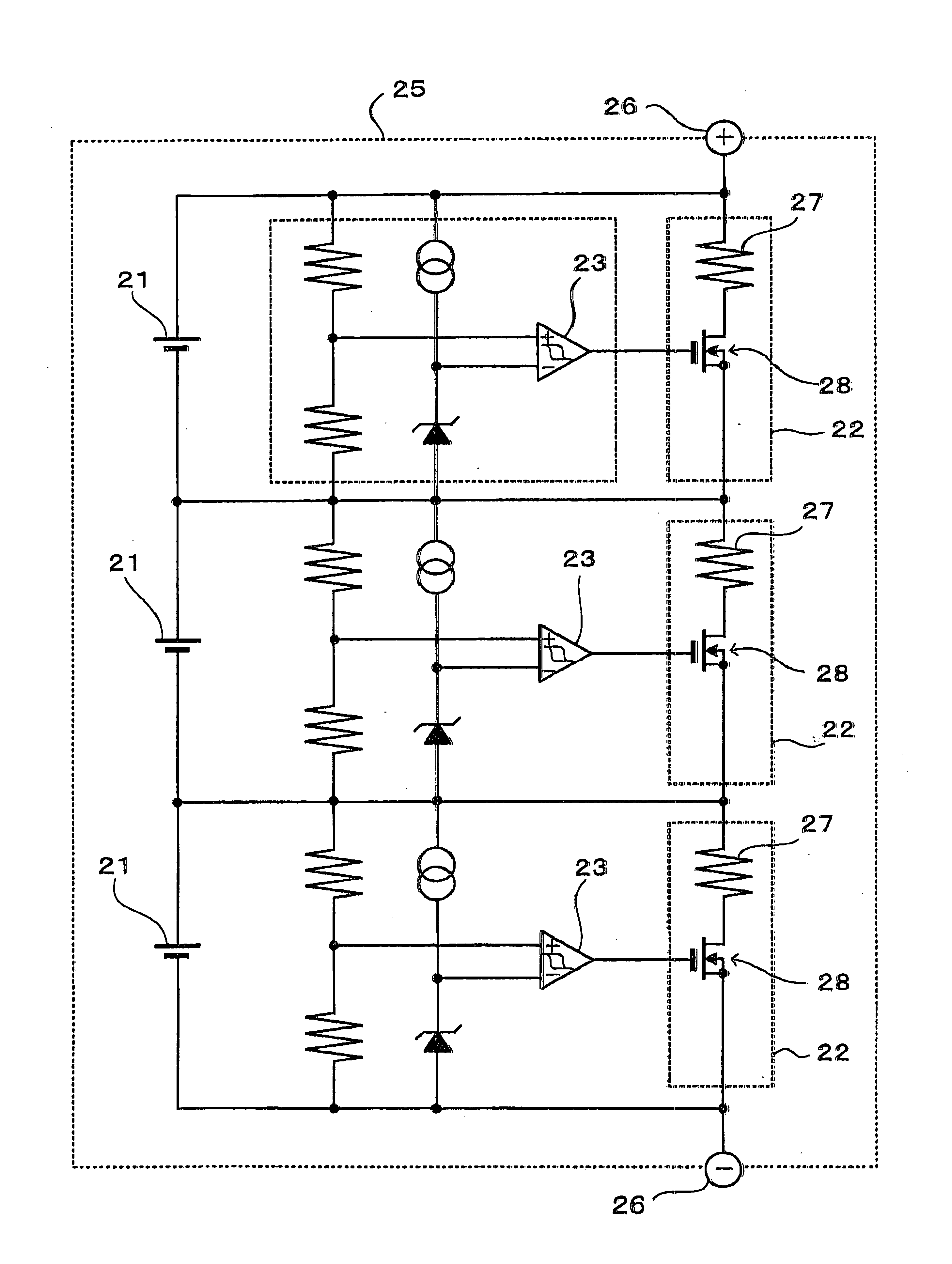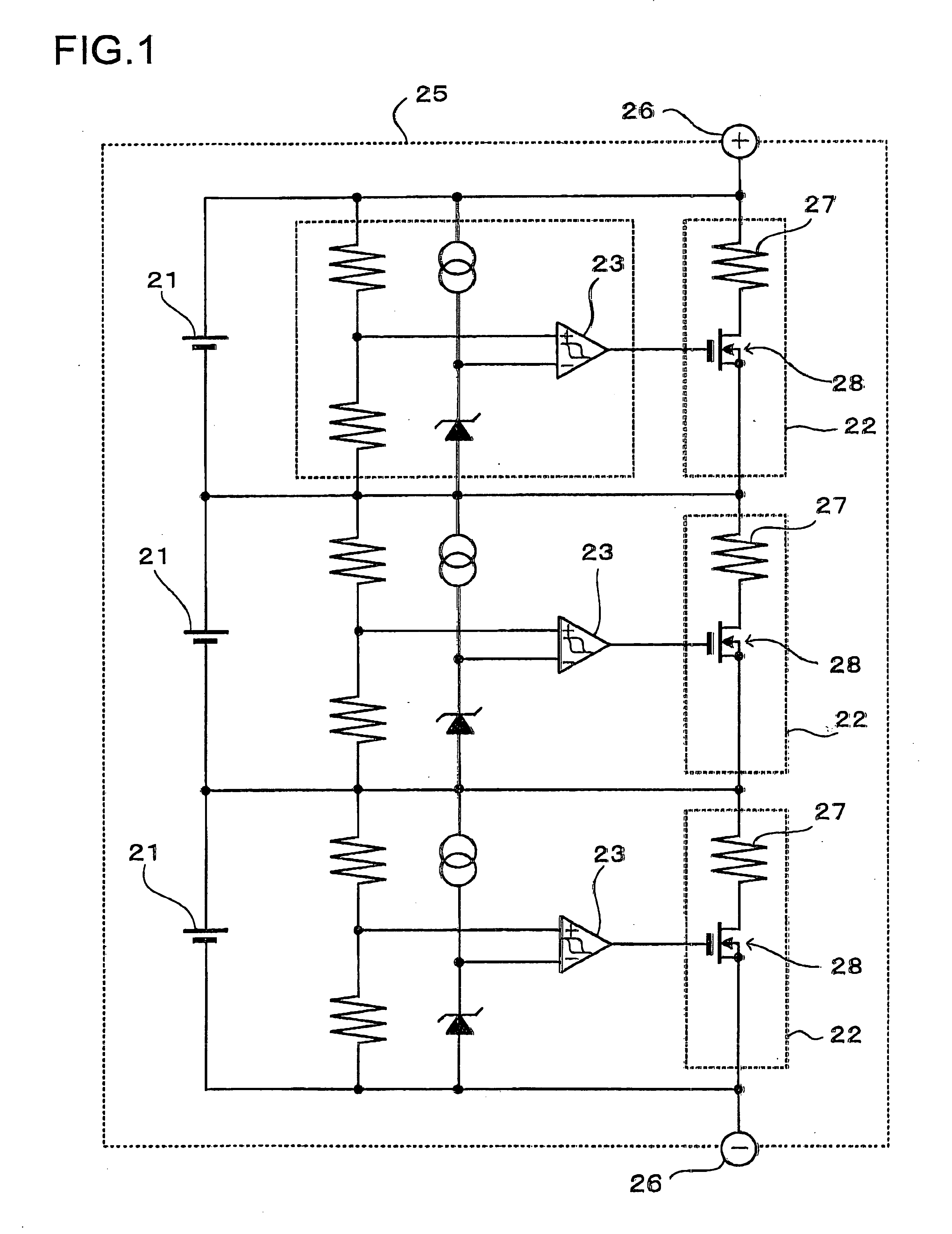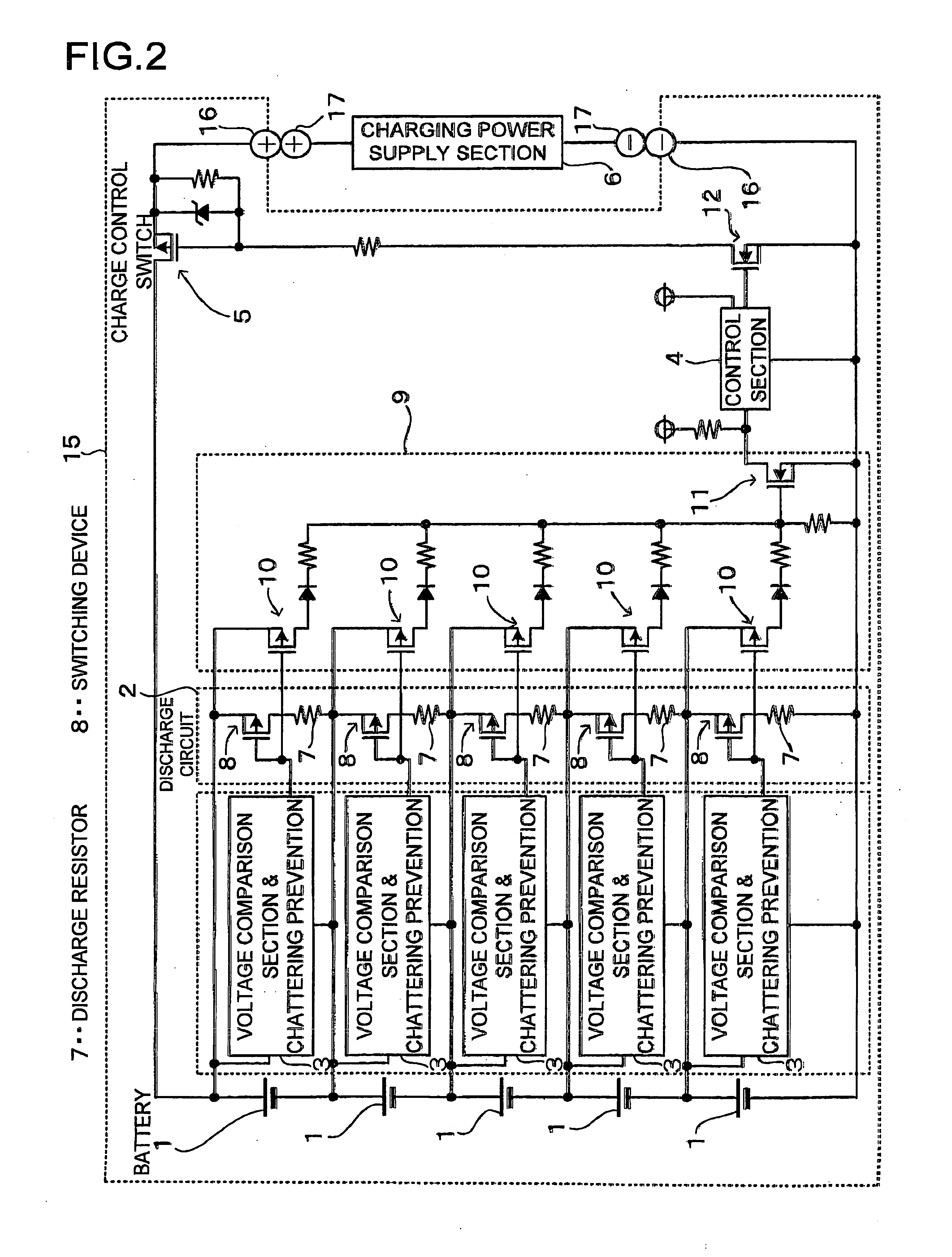Battery charging method
- Summary
- Abstract
- Description
- Claims
- Application Information
AI Technical Summary
Benefits of technology
Problems solved by technology
Method used
Image
Examples
Embodiment Construction
[0020]FIG. 2 shows a charging circuit including a voltage balancing circuit used in the charging method of the present invention. This charging circuit including voltage balancing is housed in a battery pack 15. The charging circuit with voltage balancing charges a plurality of rechargeable batteries 1 connected in series. The rechargeable batteries 1 are lithium ion batteries. However, the rechargeable batteries can be any batteries that can be recharged, such as nickel hydrogen batteries or nickel cadmium batteries instead of lithium ion batteries.
[0021] The battery pack 15 attaches to a charging power supply, section 6 in a detachable manner with its positive and negative battery output terminals 16 in electrical contact With positive and negative charging terminals 17 of the charging power supply section 8, Alternatively, instead of the detachable battery pack arrangement, it can also be configured as a battery pack internal to a piece of electrical equipment (not illustrated)....
PUM
 Login to View More
Login to View More Abstract
Description
Claims
Application Information
 Login to View More
Login to View More - R&D
- Intellectual Property
- Life Sciences
- Materials
- Tech Scout
- Unparalleled Data Quality
- Higher Quality Content
- 60% Fewer Hallucinations
Browse by: Latest US Patents, China's latest patents, Technical Efficacy Thesaurus, Application Domain, Technology Topic, Popular Technical Reports.
© 2025 PatSnap. All rights reserved.Legal|Privacy policy|Modern Slavery Act Transparency Statement|Sitemap|About US| Contact US: help@patsnap.com



